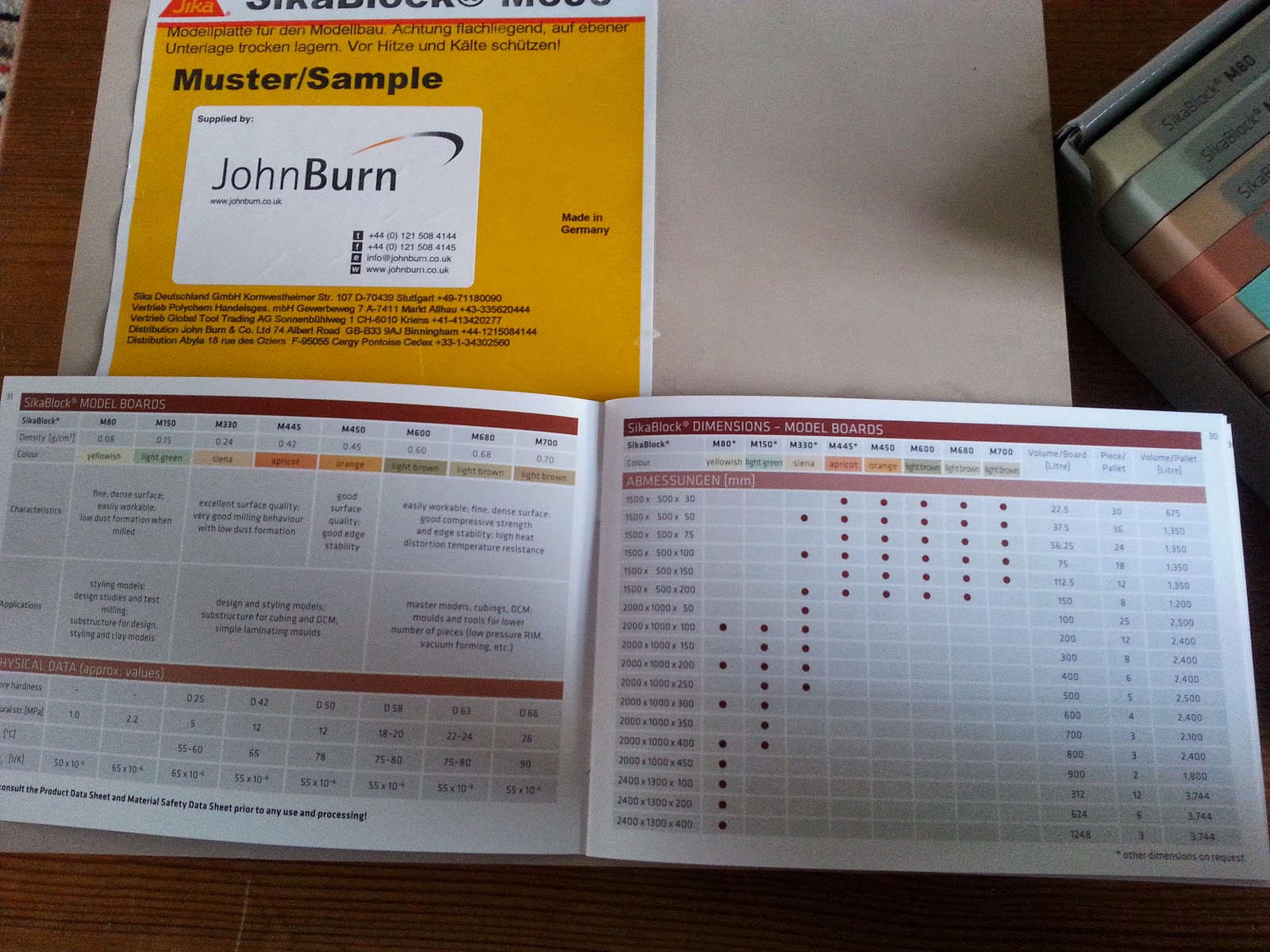Having no idea what I was doing, I asked if they could recommend which material to use for making moulds for casting, and sent a link to this very blog. There is little information about the difference between all the different types of model board and foam block (and whatever else it might be called under different trade names) anywhere on the 'net, so I just emailed to ask which would be best.
After sending my home address, I got an email from Julie who said their technical rep would be in touch to discuss the requirements and in the meantime, they could send a sample of typical milling material in the post. Less than 24 hours later, and the postie dropped off a heavy little box, stuffed full of all kinds of goodies!
There's a great big block of heavy, dense board (it's more a block than a board as it's about 50mm thick!) and a box full of perfectly sized sample "sheets" which are the ideal size for routing out maybe two or three 15mm wall sections on each. The box also contained a handy leaflet giving typical uses for each material type.
Some of the foam blocks look and feel like foam. The lightest material is almost as light as florists foam, but much more rigid (though you can deform it by simply pressing in your hand)
At the other end of the scale, there are also pieces of material which feel incredibly dense - not only heavy, but having a solid sound when you tap on them. They feel almost like small slabs of stone!
The lighter foam sheets have a very definite "grain" to them. It is entirely possible that even after milling, these lighter foam blocks might have a slight textured appearance. The denser blocks also have a slight wood-like grain on the surfaces, but the cut edges of the blocks give an idea of how they might appear after milling.
The little booklet also gives a table of settings for each material type. There's data for tool size, cutting depths and feed rate, amongst others. However, we're going to have to do a bit of investigating into what these mean exactly, as even the lightest foam lists the cutting depth for a 4mm bit as 0.1mm per pass and a feed-rate of 290m/min. We've no idea how this relates to a the settings we need to use for a our big, slow, desktop CNC machine, with a puny 1mm router bit.
If we could get CNCPaul to answer his emails, maybe we'd have more of an idea..........





This blog made me your crazy follower. I am deeply impressed by your work and therefore adding you in my favorite list so that next time I could read you again.
ReplyDeleteFused silica cnc machining